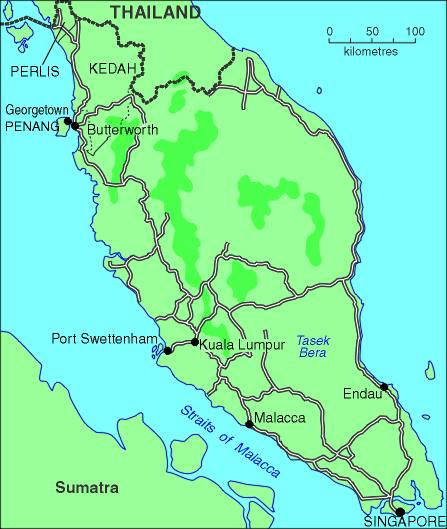
Malaya
Map courtesy of Department of Public Information - Army
In the nineteenth century Britain claimed Malaya and parts of Borneo as colonies. Many local Malays did not want their country to be a colony of Britain but they were not strong enough to remove the colonial power. This continued through to World War 2, when, in 1941, the Japanese invaded and defeated the British, and occupied the area, ‘liberating’ it from colonialism (but in fact imposing their own often brutal colonial rule).
During this period the British trained and equipped many local Malays and Malay Chinese as guerrilla groups to fight the Japanese. The Chinese in particular hated the Japanese because of their invasion of and brutal behaviour in parts of China in the 1930s.
At the end of the war, the British wanted non-communist Malays to take control - but the Malay Chinese, many of whom were communists, wanted Malaya to be a communist country, so they started to fight the British.
1957 population figures for Malaya:
- Malays - 3.12 million
- Chinese - 2.33 million
- Indians - 0.69 million
- Others - 0.12 million
(Federation of Malaya Year Book 1959)
The Malay Communists had the potential support of many local Malay Chinese - who had been badly treated by the government, denied land rights, and were economically very poorly off after the war. They sometimes helped, but rarely hindered, the active Malay Communists.
On 16 June 1948 three British planters were executed by communist terrorists (CTs) and a State of Emergency was declared by the British government.
One early tactic was to move many Malays in fringe areas to new villages, to keep them away from the Malay Chinese communist influence. This was initially resented, although it improved their living conditions eventually.
From 1951, the British started a campaign to ‘win the hearts and minds’ of the Malays, as well as defeating the CT guerrillas. The tactic was to isolate the guerrillas from community support, and drive them into the jungle where existence was difficult. Patrolling would keep them on the move, and break up their concentration of strength, wear them down, and destroy their hidden supply and ammunition caches. Aerial bombing would also be a part of this continual harassment.
The Malay and British governments asked Australia for military support. The Australian government was keen to help; Communism seemed to be on the spread in Asia; support would stabilise a friendly government in the region; it would also maintain a traditional commitment to Britain; it would also show that Australia was a good ally ready to help its South East Asian Treaty Organisation allies. It also suited Australia to meet any potential enemy in other countries: Prime Minister Menzies said in 1955, ‘...if there is to be war for our existence it should be carried on as far from our shores as possible’.
By 1955, when Australian troops arrived in Malaya, the war against the CTs was being won, but needed a long and wearying ‘cleaning up’ process - in which the Australians took part.





